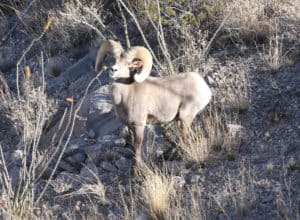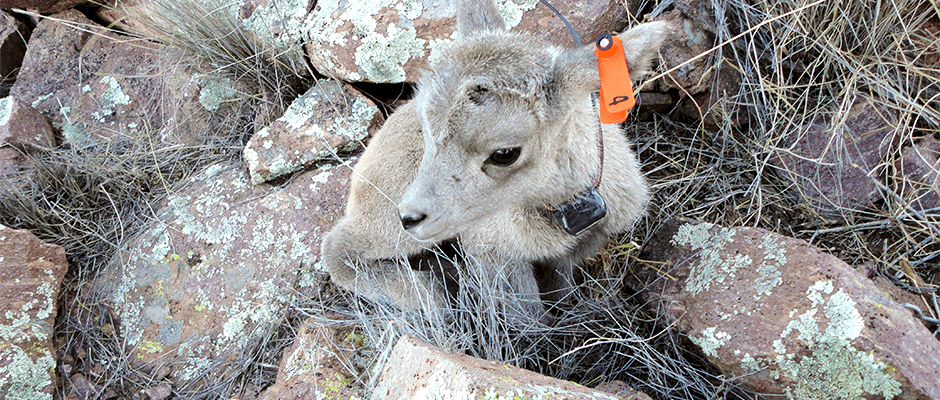Share this article
What’s killing desert bighorn lambs?
When New Mexico removed desert bighorn sheep (Ovis canadensis mexicana) from the state’s list of threatened and endangered species, biologists had a pretty good sense of what caused adult sheep to die, but data were scant on what was killing lambs. Past studies looked at tagged bighorns of various ages, but they often missed out on the youngest lambs.
“Lambs are really susceptible to predator species that the adults really aren’t susceptible to,” said TWS member James Cain, co-author on a study on bighorn lamb mortality in the Journal of Wildlife Management, “and there’s a lot of variability in lamb survival from one year to the next.”
The assistant unit leader for wildlife for the U.S. Geological Survey’s New Mexico Cooperative Fish and Wildlife Research Unit, Cain and former graduate student Rebekah Karsch cooperated with New Mexico Department of Game and Fish on a study of bighorn lamb survival and mortality in the Peloncillo Mountains of southern New Mexico. They captured pregnant adult females in the fall of 2011 and 2012 and fitted them with telemetry collars and vaginal implant transmitters. When the lambs were born, they fitted them with adjustable tracking collars to study mortality in the lambs for their first six months of life.
In the two years, researchers counted a total of 14 mortalities, of which 12 were due to predation. In the first year, 71 percent of lambs survived to six months. In the second year of the study, survival decreased to 20 percent, due mostly to an increase in coyote (Canis latrans) predation, which took no lambs the first year but four in the second.

The same animal was photographed during aerial surveys five years later. ©N.M. Tatman, New Mexico Department of Game and Fish
“I was surprised at the difference,” Cain said.
Those numbers are important, he said, because coyote predation is a particular threat to very young lambs. All of the deaths attributed to coyotes occurred at less than 8 weeks of age. Studies looking at older sheep might miss those deaths and paint a false picture of survival and cause-specific mortality, he said.
In the study, “most of the mortalities occurred very early on,” Cain said. The highest mortality rates — five of the 14 lamb mortalities — occurred before 7 days of age.
Mountain lions killed a total of five lambs in the two years. A gray fox (Urocyon cinereoargenteus) killed one limb the first year. Two lambs were killed by unknown predators in the second year.
Cain said he was surprised to see the gray fox predation, as well as the lack of predation by golden eagles (Aquila chrysaetos), which have been known to take young bighorn.
The findings suggest that removing coyotes around lambing season may be most effective in improving survival, but it’s not easy, Cain said. Bighorn lambing season is unusually long, running from late December through early April. That “would complicate implementing a targeted coyote removal effort,” researchers concluded.
Header Image: A male lamb is tagged less than 48 hours after its birth. ©R.C. Karsch, New Mexico State University








